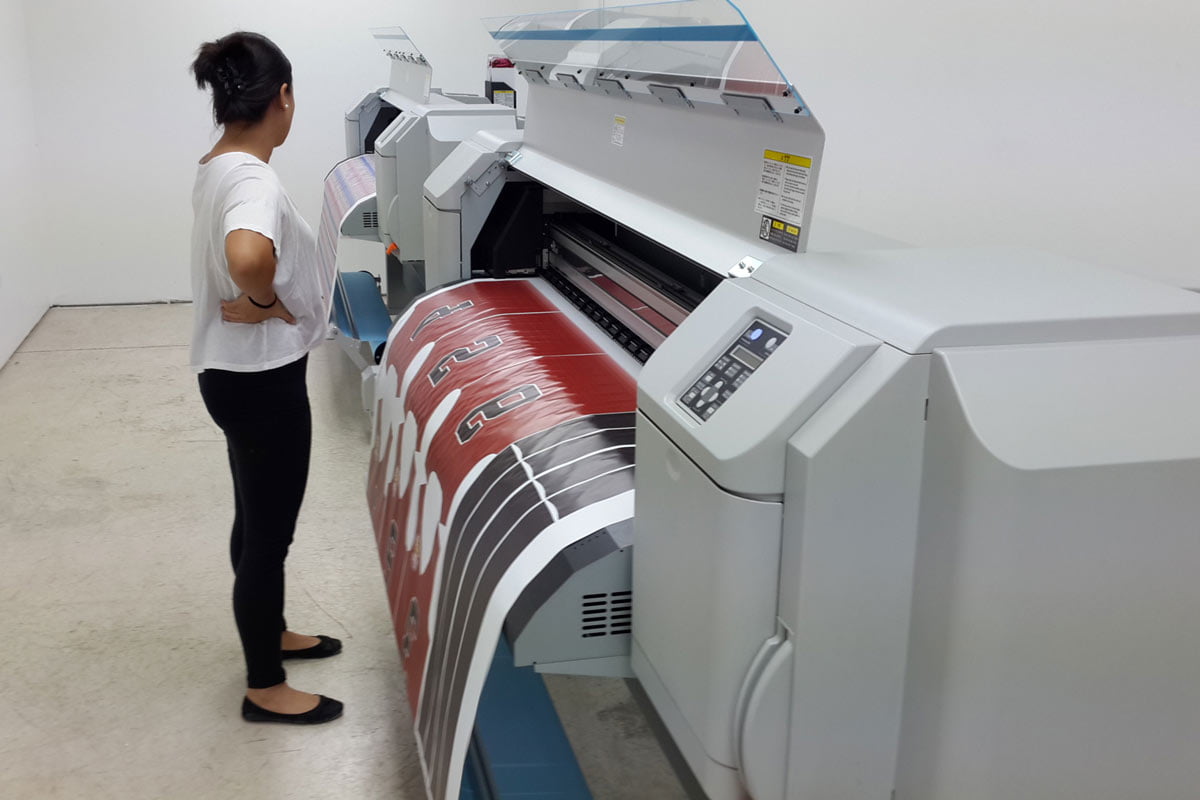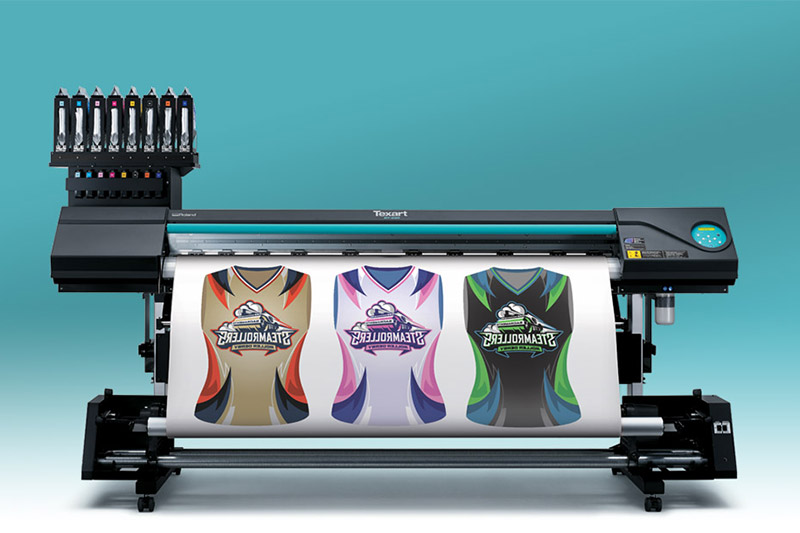The Rise of DTF Printing: Exploring Its Benefits and Applications
The appearance of Direct to Film (DTF) printing technology is transforming the custom garments market, offering notable benefits and a vast variety of applications. As the hunger for custom items continues to expand, recognizing just how DTF printing can satisfy these evolving demands is progressively crucial.

Recognizing DTF Printing Modern Technology
Understanding DTF Printing Modern technology marks a significant improvement in the textile printing sector, specifically for its flexibility and efficiency. Direct-to-Film (DTF) printing is a sophisticated process that involves printing designs onto special transfer films, which are then transferred onto fabric utilizing warm and pressure. Unlike traditional methods, DTF printing does not call for pre-treatment of the fabric, allowing a much more streamlined process.

Once healed, the movie is positioned onto the material, and a warm press transfers the design by applying regular warmth and stress. This leads to dynamic, top notch prints that adhere perfectly to various fabric kinds, consisting of cotton, polyester, and blends (Branded clothing). The modern technology's capacity to create vivid and detailed styles with minimal arrangement makes it a game-changer in the fabric printing arena
Key Advantages of DTF Printing
One of the key advantages of DTF printing is its outstanding flexibility, which permits high-grade prints on a large array of material types. This ability extends past standard cotton to include polyester, nylon, leather, and also mixed textiles, making it suitable for diverse fabric applications. This adaptability minimizes the need for several printing technologies, simplifying production procedures and decreasing general prices.
An additional significant benefit is the remarkable print quality that DTF innovation supplies. By utilizing vivid, resilient inks and specific application methods, DTF prints preserve their shade integrity and sharpness even after countless washes. This leads to an item that not only looks professional however additionally stands the test of time, offering regular worth to both producers and end-users.
Moreover, DTF printing provides a simplified operations, which can bring about enhanced effectiveness and efficiency. Unlike typical methods such as screen printing, DTF does not need intricate arrangement or extensive drying times. This simplicity of use makes it an appealing alternative for organizations of all sizes, permitting quicker turnaround times and the ability to manage small to large production runs with very little problem.
Applications in Custom Apparel
In the realm of customized apparel, DTF printing stands out as a game-changing technology that makes it possible for producers and designers to generate bespoke garments with unmatched information and high quality. Direct-to-film (DTF) printing has changed the custom-made clothing industry by supplying versatility in design, dazzling shade reproduction, and durability. This cutting-edge technique allows for complex styles to be moved onto a wide selection of materials without compromising the honesty of the material.
One substantial application of DTF printing is in developing custom-made t-shirts, hoodies, and sports apparel. The ability to print complex graphics with great details and slopes makes it perfect for tailored garments, such as group uniforms and advertising product. Furthermore, DTF printing is especially advantageous for limited-run orders and one-off items, supplying a affordable and reliable service compared to standard display printing methods.
Additionally, DTF printing has actually opened up brand-new opportunities for designer to experiment with distinct patterns and textures, making it possible for the development of cutting-edge, progressive collections. This modern technology also sustains small companies and independent musicians by reducing the obstacles to entry in the custom-made clothing market. Inevitably, DTF printing is improving the landscape of personalized garments, combining imaginative expression with technical advancement.
Versatility Across Different Materials
Building on the advancements in personalized clothing, DTF printing's flexibility across various products even more boosts its allure. Unlike standard printing methods, DTF (Direct-to-Film) printing can be used to a substantial range of substratums, including cotton, polyester, blends, leather, and also hard surface areas like wood and glass.
The ability to publish on diverse products opens up many possibilities for organizations across various industries. In the advertising products field, companies can tailor a wide selection of products, from carry bags and caps to cups and phone instances, all with the same printing innovation. In the fashion business, DTF printing allows designers to experiment with complex patterns and vibrant colors on unusual fabrics, pushing the boundaries of creative thinking.
Moreover, DTF printing's compatibility with various products additionally translates to cost-efficiency and lowered waste, as suppliers can use the very same equipment for several applications. This versatility not only expands the range of product offerings however also improves operational performance.
Future Leads of DTF Printing
As the marketplace advances, the future prospects of DTF printing are positioned to transform different sectors through continual innovation and technical developments. The surge popular for customized apparel and advertising goods is driving the need for extra efficient, versatile, and economical printing approaches. DTF printing, with its ability to produce premium, long lasting prints on a large range of products, stands at the leading edge of this improvement.
Emerging patterns indicate that DTF printing will significantly incorporate with automation and AI modern technologies, enhancing manufacturing speed and decreasing labor costs. Advanced software application remedies will certainly further maximize design precision, shade matching, and print uniformity, resolving some of the existing limitations. Furthermore, environment-friendly inks and recyclable transfer films are anticipated to get grip, aligning with worldwide sustainability objectives.
As research study and development initiatives proceed to increase, the extent of DTF printing will likely expand, opening new opportunities for industrial and creative applications. In summary, the future of DTF printing is bright, encouraging significant innovations and wider industry adoption.
Conclusion

Comprehending DTF Printing Modern technology notes a significant innovation in the fabric printing sector, especially for its versatility article and performance. Direct-to-Film (DTF) printing is an advanced process that entails printing styles onto special transfer movies, which are then transferred onto textile making use of warm and pressure. DTF printing is particularly advantageous for limited-run orders and one-off items, giving a economical and reliable service compared to standard screen printing methods.
Unlike standard printing approaches, DTF (Direct-to-Film) printing can be applied to a considerable range of substratums, consisting of cotton, polyester, blends, natural leather, and also hard surface areas like timber and glass.DTF printing innovation is transforming the personalized garments market by offering reliable, economical, and versatile remedies for generating vibrant layouts on numerous textiles without pre-treatment.